- Home
- Carl Sagan
Comet Page 4
Comet Read online
Page 4
A fearful star is the comet, and not easily appeased, as appeared in the late civil troubles when Octavius was Consul; a second time by the … war of Pompey and Caesar; and, in our own time, when, Claudius Caesar having been poisoned, the empire was left to Domitian, in whose reign there appeared a blazing comet.
Lucan and Pliny were the wave of the future.
Josephus mentions in his History of the Jews that a “sword” hung over Jerusalem for a whole year, foretelling the destruction of the city in the reign of the Emperor Vespasian. This is probably a reference to the apparition in the year 66 of Halley’s Comet. But how could a natural object hang over a city for a year? The Earth turns. A comet would rise and set with the stars, and surely cannot be described as “hanging” over any place on the Earth’s surface. Meteors streak and vanish in an instant, planets cannot look like a sword, the aurora borealis is too far north, and even an artificial satellite cannot hover over nonequatorial Jerusalem. Barring a miracle, Josephus’ hanging sword—unrecorded by any other chronicler of the time—must, along with other matters in his chronicle, be considered skeptically.
As classical learning dwindled over the centuries, the triumph of superstition was symbolized by the deaths of two emperors. The comet of the year 79 was said to portend the death of the Emperor Vespasian, who had already found himself involved with cometary portent. Although a shameless contriver of divine omens to justify and authenticate his seizure of the empire, Vespasian in this case expressed a healthy skepticism. “That hairy star does not portend evil to me,” he said. “It menaces, rather, the King of the Parthians,” his longtime adversary. “He is a hairy man,” Vespasian explained, “I am bald.” His skepticism did not save him, though, and he died the same year. By the early Middle Ages, the association of comets with the deaths of princes was so deeply ingrained that when a ruler died and nothing untoward was seen—as was the case at the death of Charlemagne in 814—a fiery apparition, otherwise invisible, was generally acknowledged to be blazing in the skies: the Emperor’s new comet.
You steep yourself in the cometary discourse of the whole of the Middle Ages, and you cannot find anyone within shouting distance of Democritus, Apollonius, Aristotle, or Seneca. The medieval treatises are full of divination and portent, omen and blood, mysticism and superstition, with hardly ever, even as a passing thought, the view that comets might be just a part of nature, and not a warning to the wayward. Even the historian Isidor, Bishop of Seville (602–636), who denounced astrology and astrologers, believed that comets presaged “revelations, wars, and pestilence.” For more than a millennium there was no dissenting opinion, and even the occasional attempt at purely factual statements—as the announcement by the Venerable Bede (673–735) that comets are never seen in the western sky—were often wholly in error on straightforward matters of observation.
So, when the Renaissance and the Enlightenment finally came, a new breed of scholars arose who were predisposed to hold the Church responsible for superstition and ignorance—about comets, and many other matters. Callixtus III was a Spanish-born Borgia, untainted by scandal, who was made Pope in 1455 at the age of seventy-seven. It was the obsession of the end of his life to recover Constantinople from the Turks, the adversary ideologies of the time being as fervent and narrow as the Cold War struggle in our own day between capitalism and communism. Each side confidently called upon the One True God, and publicly proclaimed the inevitability of victory.
A woodcut printed in Nuremberg of the comet of 1556 and the accompanying earthquake in Constantinople. From The Nuremberg Chronicle (1493). Courtesy Ruth S. Freitag, Library of Congress.
The Comet of 1066 as depicted on the Bayeux Tapestry, which was completed soon after this apparition. King Harold of England, about to be overthrown by the Norman invaders, wonders whether to heed the portent. Crowds of onlookers (left) admire the comet. Courtesy International Halley Watch.
In 1456, a great comet appeared in European as well as in Chinese skies. Once detected, the comet seems to have struck real terror in beleaguered Christendom. We know today, as Callixtus and his contemporaries did not, that what they were seeing was the periodic return of Halley’s Comet. Callixtus was convinced, so the story goes, that the visitor was an evil omen, somehow allied with the Turkish cause; accordingly, he excommunicated it, ordering this heartfelt plea inserted into the Ave Maria: “From the Devil, the Turk, and the Comet, Good Lord, deliver us.”
According to many accounts, Callixtus sent 40,000 defenders to Belgrade, a city under Christian control besieged by the Turks, where, on August 6, 1456, with Halley’s Comet hanging overhead, a great battle was fought which lasted two days. A later historian described the battle in these words: “The Franciscans, unarmed, crucifix in hand, were in the front rank, invoking the papal exorcism against the comet, and turning upon the enemy that heavenly wrath of which none in those times dared doubt.” The armies of Mohammed II were repulsed, and both the comet and the Turks retreated. (The Turks composed memorable images of the comet, of which a particularly lovely example can be seen on this page, second from the bottom on right.) Constantinople was never recovered by the Christians.
One astronomical writer after another has quoted this account of the evenhanded anathematization of Turk and comet, and yet there is no record of such a prayer or curse in the Vatican archives, and no evidence that Callixtus excommunicated the comet, its previous adherence to the tenets of Christianity being at any rate in doubt. On June 29 a papal bull was issued ordaining public prayers for the success of the Crusade; there is not a word in it about the comet, which was invisible to the naked eye by the middle of July; the decisive victory over the Turks was a few weeks later.
As far as can be determined, the story most astronomical writers relate about Callixtus and the comet traces back to The System of the World, by Pierre Simon, the Marquis de Laplace, whom we will meet again in these pages. A brilliant scholar who left an enduring mark on the history of physics and astronomy, he was also a partisan of the French Revolution and its rationalistic underpinnings. His System of the World was published “in Year IV of the Republic” (1796). Because the Church had been intimately allied with the brutal regime of the Bourbon kings, it is possible that Laplace was disinclined to be overly generous to Callixtus III. But Laplace did not make the story up, and the confusion seems to trace back to the 1475 work Lives of the Popes by the Vatican librarian, Platina. The image, however spurious, of a Pope solemnly excommunicating a comet was deemed at least consistent with the prevailing opinions on comets, both secular and ecclesiastic.
Moctezuma II of Mexico is distressed to see an omen in his sky. When Hernán Cortés appeared in 1519, Moctezuma regarded his arrival as the fulfillment of dire cometary prophecy. This image, from Los Tlacuilos de Fray Diego Durán (México, Cartón y Papel de México, 1975), was painted sixty years afterwards. Courtesy Ruth S. Freitag, Library of Congress.
Far from the Vatican, and a generation later: In Tenochtitlán, the Aztec emperor, Moctezuma II (1466–1520), was awaiting the great white-bearded god, Quetzalcoatl, whom prophecy had decreed would return to Mexico and reclaim his empire. When two brilliant comets arrived in rapid succession, and appeared to rendezvous in the sky, Moctezuma took them as a sure omen that Quetzalcoatl was on his way, that the Aztec empire was his no longer. Withdrawn and disconsolate, he took every fire, storm, and oddity of nature as a further portent. The master of the greatest empire in the Western Hemisphere was reduced to immobility by two comets and a prophecy. And so, in 1519, when the white-bearded conquistador Hernán Cortés arrived out of the eastern sea with an expeditionary force of 600 men and a few horses, Moctezuma did not have to be much persuaded. He handed the empire back to Quetzalcoatl. The Aztecs were helpless against Cortés’ small band for more reasons than one. But the conquest and plunder of Mexico, and the annihilation of the Aztec civilization, were in some significant measure due to a fatalistic dread of comets.
Across the Atlantic, the Protestant Reforma
tion was soon under way. The contending sects, divided on many theological issues, were in perfect harmony on the matter of comets. On this issue at least, the movers and shakers of the Reformation saw eye to eye with Moctezuma II. Martin Luther (1483–1546) spoke for all of them when, in an Advent sermon, he preached: “The heathen writes that the Comet may arise from natural causes; but God creates not one that does not foretoken a sure calamity.” No hedging of bets here. Andreas Celichius, the influential Lutheran bishop of Altmark, in 1578 described comets as
the thick smoke of human sins, rising every day, every hour, every moment, full of stench and horror before the face of God, and becoming gradually so thick as to form a comet, with curled and plaited tresses, which at last is kindled by the hot and fiery anger of the Supreme Heavenly Judge.
This view of comets as congealed sin ignited by the Wrath of Heaven shows how many steps backward had been taken since the time of Aristotle (to whom Celichius is clearly indebted). A retort was provided by Andreas Dudith in the following year: “If comets were caused by the sins of mortals, they would never be absent from the sky.”
From all this, you might have never guessed in the middle of the sixteenth century that a revolution in human understanding of comets, and much else, was about to happen. In Denmark, in the very year that Luther died, there was born just such a “heathen” as Luther had denounced. His name was Tycho Brahe. With his artificial nose of gold or brass, his entourage of dwarfs, his legendary drinking parties, and his palatial island observatory, he was not your typical astronomer.
In Tycho’s time, the unimpeachable authority on comets was still Aristotle. His doctrine that comets were confined to the Earth’s atmosphere because the heavens were fixed and changeless was a cornerstone of the sixteenth-century model of the universe, endorsed by secular and religious authorities alike. This was not a controversial issue. All knowledgeable experts agreed with Aristotle. The first real doubts were raised on a night in 1572 when Tycho looked up at the constellation Cassiopeia and saw a star “brighter than Venus,” where no star had been before. The new star was far beyond the Earth’s atmosphere, and is even now known as Tycho’s Supernova—nova is the Latin word for new. Evidently, and to nearly everyone’s surprise, the heavens were not immutable. Aristotle and the Church had been wrong. The supernova of 1572 was a reveille for the astronomers of Europe and, soon, for the culture of the world.
Five years later, a great comet blazed across the skies of Europe to overturn decisively Aristotle’s now-tottering world view. Because the Comet of 1577 was visible for an extended period, Tycho and his colleagues were able to share information and test each other’s hypotheses. The supernova of 1572 had prompted Tycho to approach the comet as if it were an astronomical body, rather than an atmospheric disturbance.
If you look up at a comet you see it against a backdrop of more distant stars. As time goes on, it may move from constellation to constellation (this page), but in any given few-day period it seems frozen within its constellation, and rises and sets with the stars. Tycho asked himself how the comet would look if it were merely an atmospheric disturbance and close to the Earth, and also how it would look if it were a body like the planets or the stars, far from the Earth. He was able to hold two contradictory ideas in his head at the same time. Place your finger in front of your nose and alternately wink your left and right eyes. You will see the finger seem to move against the more distant landscape. Now move the finger to arm’s length and wink again. The finger still moves, but less so. The apparent motion is called parallax; it is merely the change in perspective from left eye to right. The closer the finger is to you, the more parallax or apparent motion against the background; the further the finger is from you, the smaller is the parallax.
If a comet were something in the Earth’s atmosphere, as Aristotle maintained, then two observations from widely separated points would see it against quite different background stars (above). In this diagram the cones represent the lines of sight of the two observers. But if the comet is very far away (on this page), the widely separated observers see the comet against almost the same stellar background. Simultaneous observations can therefore tell us the distance from the Earth to the comet. Diagrams by Jon Lomberg/BPS.
Tycho realized that this same principle can be applied to a comet—provided you could observe it from two widely separated observatories. If the comet is close to the Earth, the perspective will change greatly between the two observatories, and each observer will see the comet in front of a very different constellation. But if the comet is far from the Earth, then both observatories will see the comet in front of the same constellation. Through parallax, it is possible to measure the distance of a comet from the Earth. Telescopes are not needed—only sighting markers and graduated circles with angular degrees marked off on them. Tycho lived in the last generation before the invention of the astronomical telescope, and his measurements could have been done—at least crudely—at any time in the previous few thousand years, had anyone thought to make the measurement. (Indeed, error-ridden parallax measurements had been attempted more than a century earlier, at the 1456 apparition of Comet Halley.)
Tycho was not the only one to make these measurements and do these calculations on the Comet of 1577, and some of his contemporaries —perhaps still in the thrall of Aristotelian thinking—got the wrong answer, and deduced that the comet was in the Earth’s atmosphere. Tycho’s meticulous measurements and calculations, however, have stood the test of time. If the comet had been within the Earth’s atmosphere, a sizable parallax would have been detected. Tycho was able to find no significant parallax. With his precision of measurement, the Comet of 1577 had to be much further from the Earth than is the Moon. The comet must therefore be somewhere up there among the planets and the stars. Combining international cooperation, elementary mathematics, and simple observations, Tycho found that the conventional wisdom had been dead wrong for two millennia.
Tycho Brake’s own drawing of the Comet of 1577 (at position X). In Tycho’s mistaken scheme of the solar system, the comet went around the Sun, but the Sun went around the Earth (A). From Tycho Brahe’s De Mundi Aetherei (1603). From the collection of D. K. Yeomans.
If previous generations had known how distant the comets really are, perhaps they would have been less frightened by them. Tycho liberated the comets from the narrow circumterrestrial confines into which they had been stuffed by Aristotle and allowed them to soar into space. Now science was free to do the same. The upheavals that mystics had always associated with comets were finally justified by the Comet of 1577.
Who vagrant transitory comets sees,
Wonders because they’re rare; but a new star
Whose motion with the firmament agrees,
Is miracle; for there no new things are.
—JOHN DONNE, TO THE COUNTESS OF HUNTINGDON, 1633
Donne’s astronomy was 56 years out of date; after Tycho, every comet as well as every supernova was a disproof of the Aristotelian view that in the heavens “there no new things are.”
In the vast literature of prophecy inspired by the comets up to this time, there is only one that commands our admiration. The prediction was made not by a soothsayer or a priest, but by a scientist. It was Seneca:
Why, then, are we surprised that comets, such a rare spectacle in the universe, are not yet grasped by fixed laws and that their beginning and end are not known, when their return is at vast intervals?… The time will come when diligent research over very long periods will bring to light things which now lie hidden.… Someday there will be a man who will show in what regions comets have their orbit, why they travel so remote from other celestial bodies, how large they are and what sort they are.
Tycho set astronomy back on course, but the man thus prophesied was Edmond Halley.
One of the first drawings of a comet as seen through the telescope. Shown are two different sightings of the Comet of 1618 on consecutive nights. The comet is moving through the constellat
ions of the Big Bear (or Big Dipper) and Boötes. Drawn at the telescope by J. B. Cysat. From The Mathematica Astronomica Ingolstaat (1619). From the collection of D. K. Yeomans.
*And many of the most recent. Thirty-five hundred years later, comets continue to be linked with catastrophe. In Chapters 15 and 16 we discuss the current scientific debate over whether comets are responsible for the extinction of the dinosaurs and most other species. Even “apparition”—the word we use today to describe the presence of a comet in our skies—is an echo, with ominous and supernatural overtones, of our ancient belief about comets.
*This is a pun. One of the many Chinese ideograms for comet is “broom star.”
†Translated by Heather Smith and Xie Yong.
*The Chinese calendar at this time was a lunar one, but in every year there was a “double month,” to adjust to solar time.
CHAPTER 3
Halley
[Mr. Halley possessed] the qualifications necessary to obtain him the love of his equals. In the first place, he loved them; naturally of an ardent and glowing temper, he appeared animated in their presence with a generous warmth which the pleasure alone of seeing them seemed to inspire; he was open and punctual in his dealings; candid in his judgment; uniform and blameless in his manners, sweet and affable, always ready to communicate.…

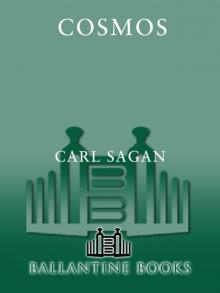 Cosmos
Cosmos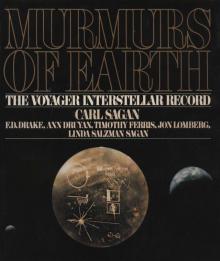 Murmurs of Earth
Murmurs of Earth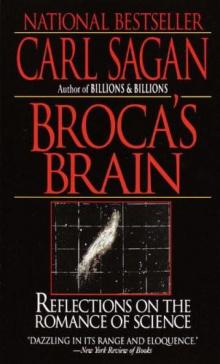 Broca's Brain
Broca's Brain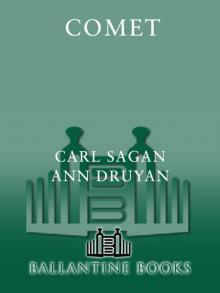 Comet
Comet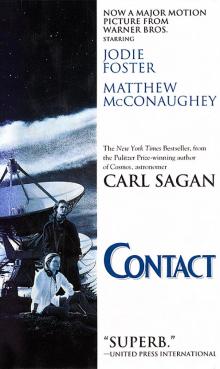 Contact
Contact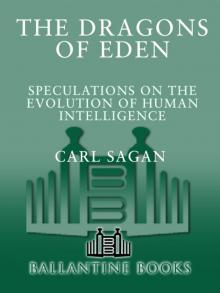 Dragons of Eden
Dragons of Eden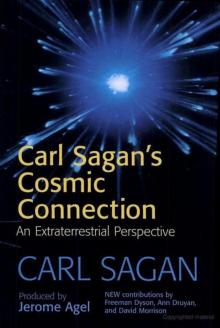 Cosmic Connection
Cosmic Connection Shadows of Forgotten Ancestors
Shadows of Forgotten Ancestors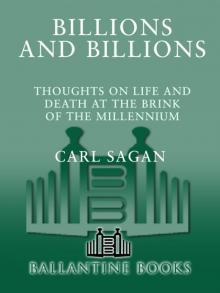 Billions & Billions
Billions & Billions Comet, Revised
Comet, Revised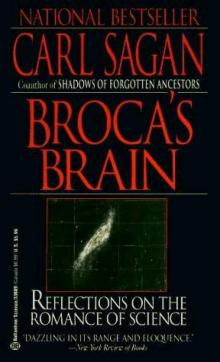 Broca's Brain: The Romance of Science
Broca's Brain: The Romance of Science The Varieties of Scientific Experience: A Personal View of the Search for God
The Varieties of Scientific Experience: A Personal View of the Search for God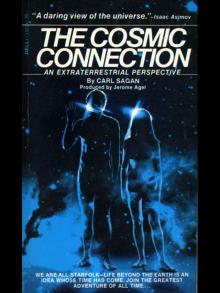 The Cosmic Connection
The Cosmic Connection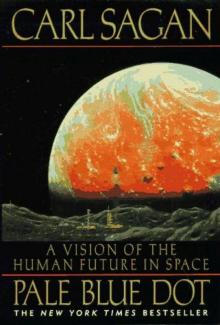 Pale Blue Dot: A Vision of the Human Future in Space
Pale Blue Dot: A Vision of the Human Future in Space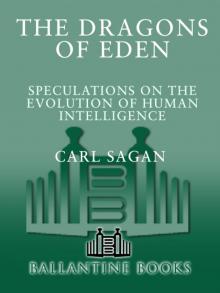 The Dragons of Eden
The Dragons of Eden